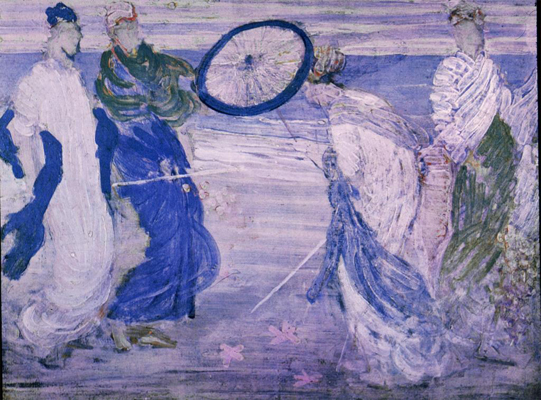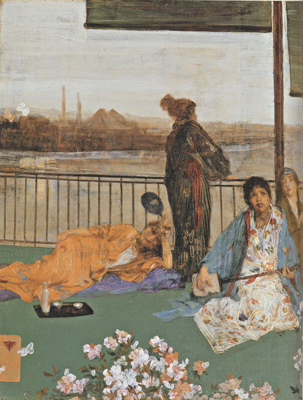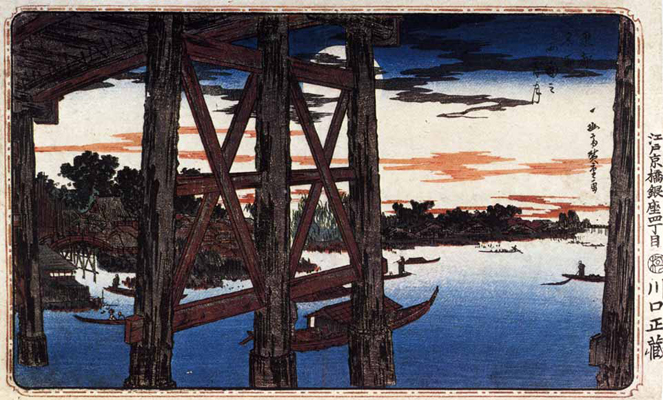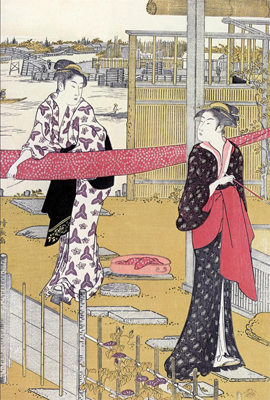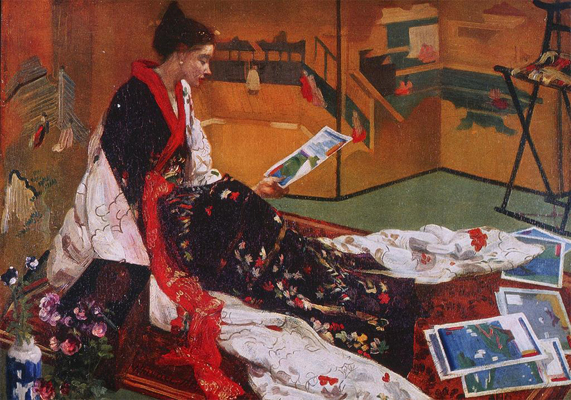
Whistler spent most of his time as a painter in Paris, where he, among many others painters, drew inspiration from the influx of Japanese woodcuts. He collected “blue and white” porcelain, screens, costumes and woodcuts shown in London’s second Great Exhibition of 1862, from which he borrowed decorative elements to form paintings like The Golden Screen [Fig. 1]. This painting showcases obviously Eastern and, more specifically, Japanese, objects, marking Whistler’s early period of painting in which visual elements are borrowed without conceptual significance and merely as objects. The intermediate stages of Whistler’s paintings, to which Symphony in Blue and Pink [Fig. 2] and The Balcony [Fig. 3] belong, showcase his increasing knowledge of balance in color and composition. Conclusively, Nocturne [Fig. 4] marks Whistler’s high period due to a “wider and deeper knowledge of Japanese prints and insight into their spirit” through a “concentrated study” of them (Berger, 39). Nocturne does not present any Japanese objects, progressing away from Whistler’s early paintings, and borrows compositional and thematic elements from Japanese sources [Fig. 5].


